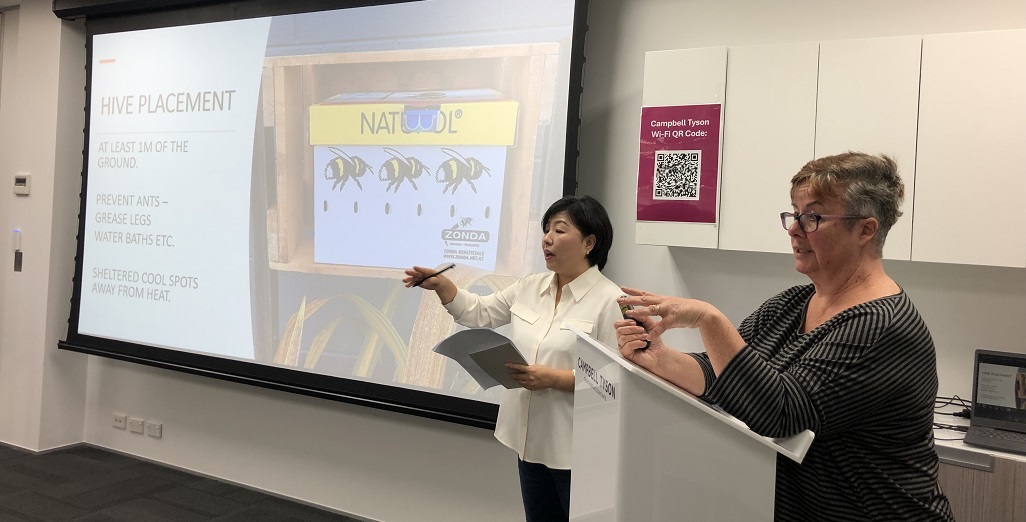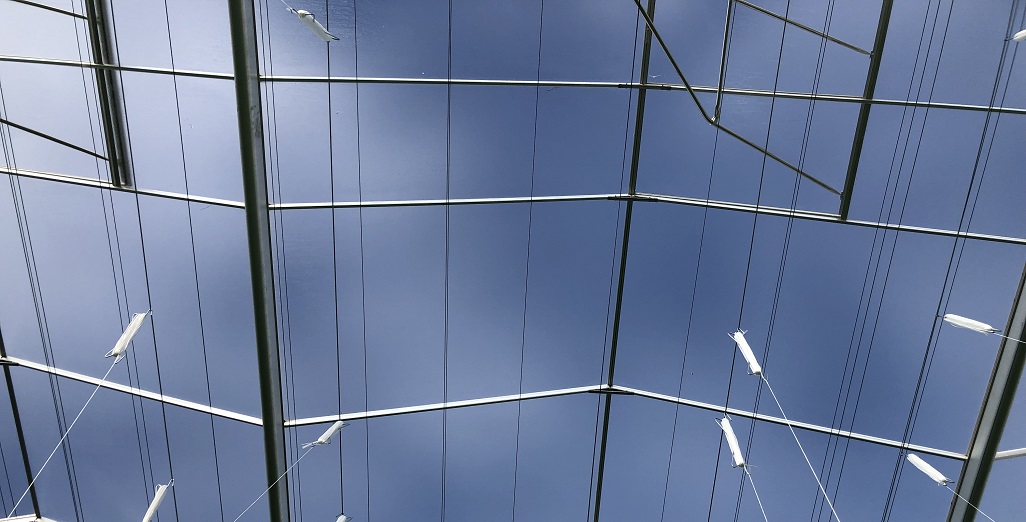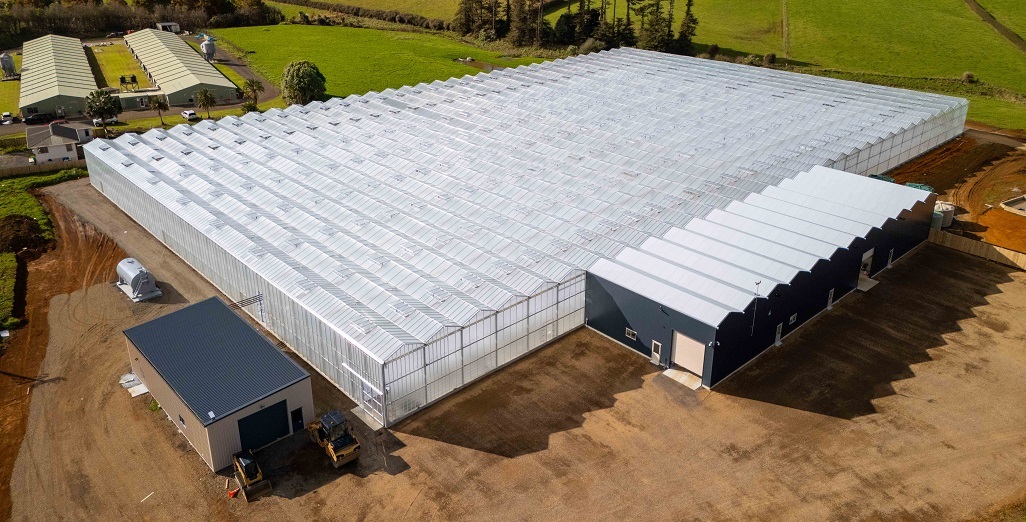Sign up here to subscribe to the Grower2grower Ezine. Every two weeks you will receive new articles, specific to the protected cropping industry, informing you of industry news and events straight to your inbox.
Aug 2018
Capsicum season underway

Is there potential for increased yield?
It is that time of year again when most capsicum growers have planted for the new season. Growers will already be seeing the first flowers and fruits forming.
I have always found capsicums to be a fascinating crop, they grow at a much slower rate than tomatoes but I have always felt they are less forgiving to mistakes. If the wrong decisions, with temperature and plant loading, occur at the beginning of the season (of which light levels play a role) it will always be difficult to balance your crop and can be very hard to change a growth pattern for the entire season. If you need to alter the direction of a crop of tomatoes it is much easier to visually see the plants reaction to either a change in fruit loading or temperature in a relatively short period of time.
Whilst working for a nursery for nine years, many trials were carried out growing advanced plants for capsicum growers. I firmly believe a strong generative flowering capsicum plant, at delivery, should be the goal. Like many other greenhouse vegetable plants grown by a nursery an advanced plant, close to or flowering at delivery, has proven to be optimum. One reason grower’s buy advanced plants is to reduce down time between the last harvest of the previous crop and the first harvest of the new crop, therefore an increase in production per annum. Once I started growing advanced plants I realised another benefit, that balancing the crop was far easier at the beginning, I needed less temperature and my substrate dried down faster lessening the plants ability to go vegetative. A big advantage was the reduction in heating required (night time temperature) to ‘burn’ the excess energy off the plant to keep it balanced.
In my opinion for capsicum plants it is possibly even more important than tomatoes to get a strong generative flowering plant at delivery. An observation, with some capsicum varieties, is that during a one-year cycle they grow too fast and reach the wire too quickly, the perception is if you plant an advanced plant that you will get to the wire even faster, but I am not so sure. The fact the nursery has control of the plant in a relatively small block (volume) means they have the ability to manipulate the EC and WC in the growing media especially after day 30. At this stage it is much easier to steer the plant. Spacing plants in the nursery at the correct time will also lessen the competition for light, reducing stretching and help dry the block down faster. The physical change this has on young capsicums is where the largest benefit for growers occurs receiving advanced plants. It helps create a close internodal space between the leaves. Using all of the tools available, the nursery from this point has total control over the plant. Another rather significant advantage for greenhouse growers in NZ is the two major nurseries now have supplementary lighting which will further allow stronger, balanced plants at delivery.
With every solution there are always questions and observations made that ultimately convince the grower about the benefits of receiving advanced plants. Capsicums, especially the older varieties, may not have root systems as vigorous as others. Many years ago, I was advised that capsicum plants should be planted out in the greenhouse as soon as roots are visible at bottom of the propagation block to reduce the risk of damaging roots and preventing root disease from developing. However, I don’t believe this should be a major factor for choosing advanced plants or not. One company, that produces propagation material, has come up with a unique block which alters the pattern (or spread) of the root systems. It has a substantial reduction in the number of roots forming at the bottom of the block during the propagation phase but once they are placed on top of the grower’s substrate, normal root establishment should occur.
Limiting factors.
One limitation in NZ, is generally capsicum crops are re-planted from May to July. Capsicum grower’s plant at large stem densities, which means a nursery would require a lot of ‘free space’ to grow advanced plants at a time of the year they are historically busy. For larger growing areas of capsicum’s there will probably not be enough nursery space. Unfortunately, as there is a need for extra space for only a short period of time it is probably not feasible for any nursery to expand to potentially accommodate for the share numbers of advanced capsicum plants needed. Filling up the extra specially constructed nursery space with other crops during the following 9 months is not easy to do. A nursery is like a hotel, it sells space and if the space is not filled there is still a cost and a return on investment that needs to be paid for, unlike produce growers whose space is filled 100% all year around, except when pulling out and cleaning in preparation for the arrival of a new crop.
If a nursery could accommodate you with advanced capsicum plants, I would purchase them. Ultimately these plants will give you an increase in yield and profit, especially if you consider picking your first set three weeks earlier than normal. A faster return on energy should be accounted for as well.
Grafted Capsicum Plants (food for thought)
The potential of grafted capsicum plants is worth considering. Grafted plants will not only give you a stronger, more resilient root system but potentially allow either 3 or 4 stems to be on grown per plant without compromising production. Initially this means you would need fewer plants at delivery, which in turn means less space a nursery needs to grow the quantity of plants you need to fill your greenhouse. I believe that several seed companies, and their respective breeders, are working hard to develop new capsicum rootstocks. There are several already in the market. I will cover this in more detail, for capsicum growers, in a future article.
I appreciate your comments. Please feel free to comment below or on the grower2grower Facebook page:
https://www.facebook.com/StefanGrower2grower/
Article Written by Stefan Vogrincic, Consultant, Grower2Grower
CLASSIFIED
Subscribe to our E-Zine
More
From This Category

Tomato grower applies Tobre after contamination

KWS inaugurates new R&D facility in Uberlândia, Brazil

John van Santen joins the management of Metazet

Workshop for Auckland’s Korean tomato growers held last week

Could the Global Boom in Greenhouses Help Cool the Planet?

























